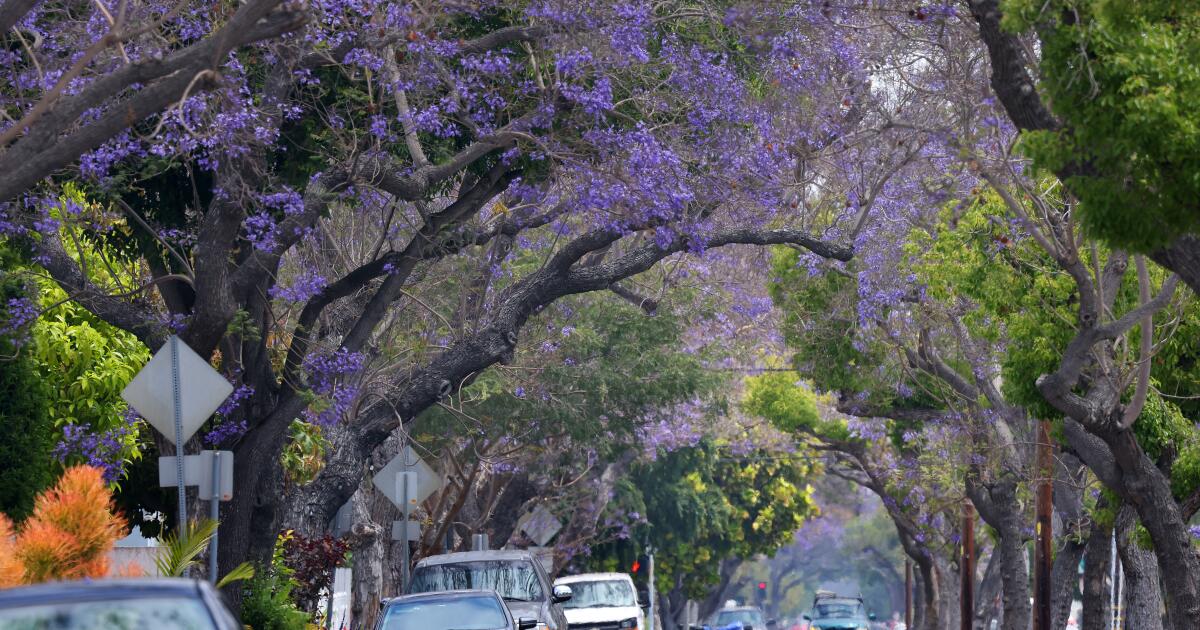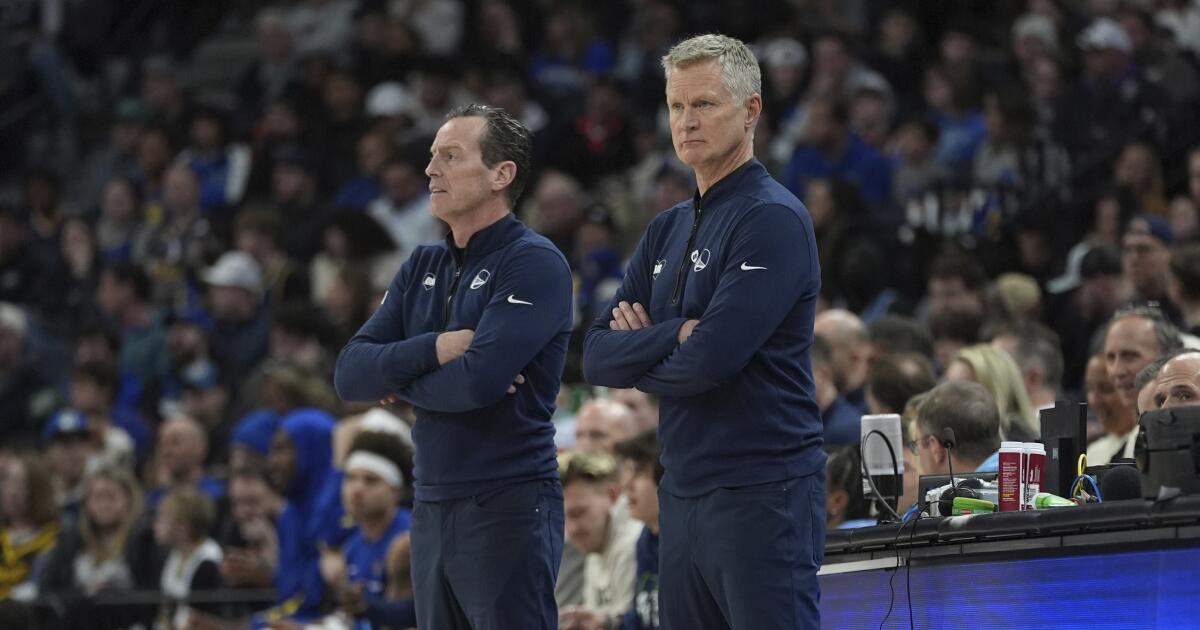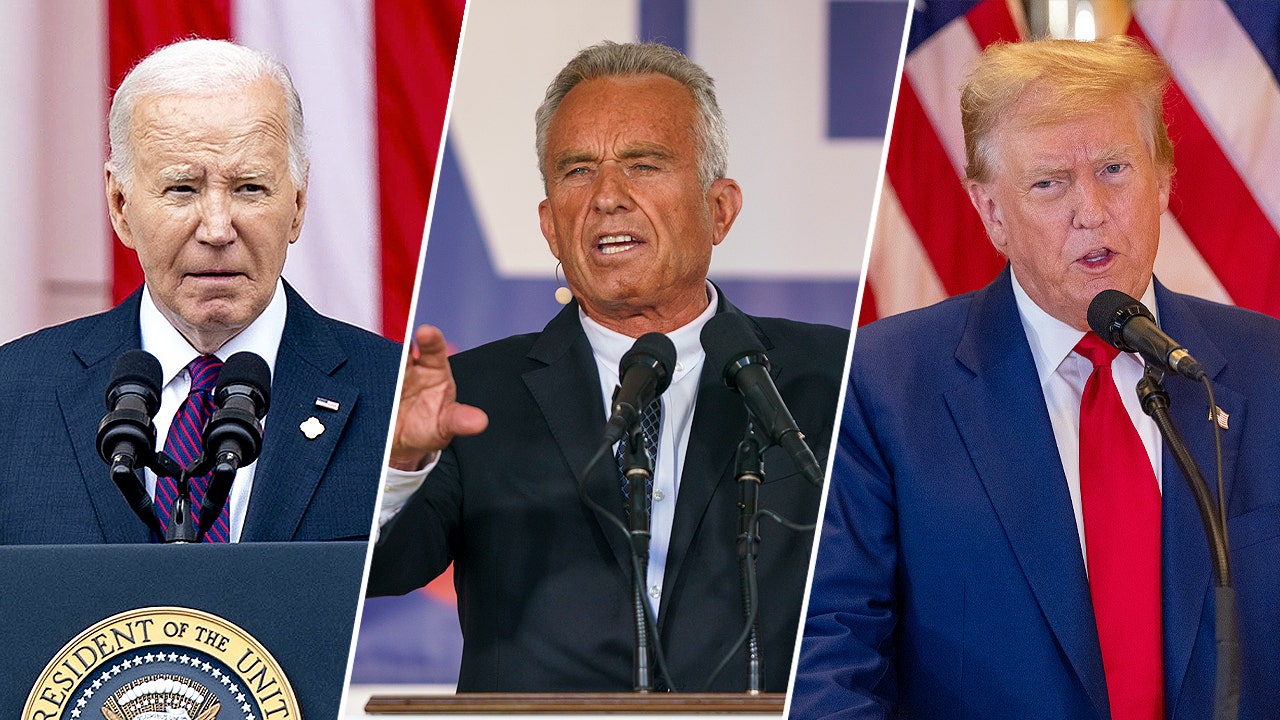Entertainment
Column: This is what it took to expose Sean 'Diddy' Combs' abuse of his girlfriend
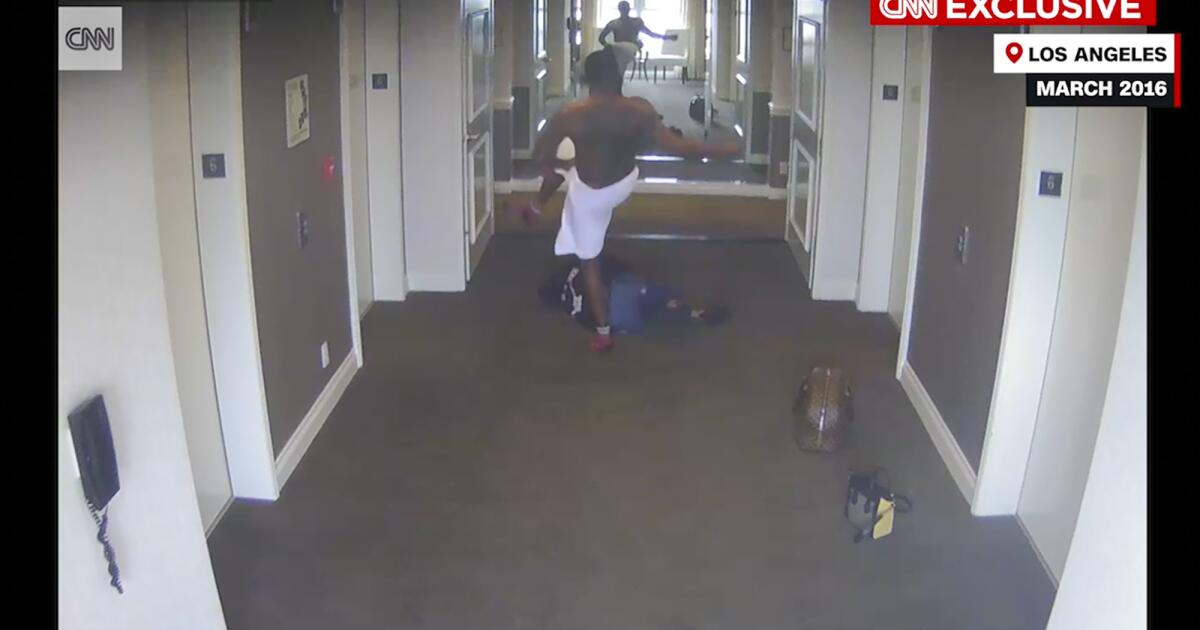
Thank God for hotel security cameras.
Last week, CNN obtained and broadcast footage of music mogul Sean “Diddy” Combs brutally assaulting a young woman in the hallway of a posh Los Angeles hotel in 2016.
As the video begins, a barefoot young woman is seen fleeing down a corridor toward elevators, stopping to hurriedly put on her shoes. Moments later, Combs emerges from a room wearing only socks and a white towel wrapped around his waist. He chases the woman down, throws her to the ground, kicks her, punches her, drags her by her hoodie and hurls a vase at her.
All while deftly managing to keep his towel in place.
The victim is R&B singer Cassie, whose real name is Casandra Ventura. In November, she filed a 35-page federal lawsuit against Combs and his label, Bad Boy Records, alleging that he had physically and sexually abused her for years and frequently forced her into encounters with male prostitutes that he watched and recorded.
The lawsuit, which left me feeling ill, lays out a disturbing narrative of extreme abuse, coerced drug use and sexual perversion over the course of the pair’s 13-year relationship, which began in 2005. When they met, she was a 19-year-old aspiring singer, while he was a 37-year-old rap icon and record label executive. He held her future in his hands, and she describes being trapped in a classic cycle of abuse.
For more than a decade after he signed Ventura to his label, the suit alleges, Combs orchestrated most aspects of her life, regularly hiding her away in hotels — she alleges one such three-week stay in Hawaii — so the black eyes and split lips he inflicted would heal.
Naturally, Combs’ attorney Ben Brafman feigned outrage at the idea that his client was an abuser:
“Mr. Combs vehemently denies these offensive and outrageous allegations,” he told the New York Times. “For the past six months, Mr. Combs has been subjected to Ms. Ventura’s persistent demand of $30 million, under the threat of writing a damaging book about their relationship, which was unequivocally rejected as blatant blackmail.”
Au contraire, retorted Ventura’s attorney Douglas Wigdor: “Mr. Combs offered Ms. Ventura eight figures to silence her and prevent the filing of this lawsuit. She rejected his efforts.”
It took tremendous courage for Ventura to file her lawsuit, which was made possible by New York’s Adult Survivors’ Act. The law gave victims a one-year window to file lawsuits for sexual misconduct alleged to have happened before 2019 for which the statute of limitations had expired. About 3,000 lawsuits were filed before the window closed in November, including, most famously, by E. Jean Carroll, who claimed that Donald Trump had raped her in a department store dressing room in 1996. A jury found Trump liable for defamation and sexual assault, which the presiding judge said was rape by another name.
Strangely enough given Combs’ professions of innocence and victimhood, Ventura’s lawsuit was settled confidentially less than two days after it was filed. At the time, his lawyer emphasized that the settlement in no way implied that Combs was guilty.
Except, come on now. The explosive video perfectly matches many of the allegations made in Ventura’s lawsuit; she doesn’t appear to have been making it up.
The lawsuit alleges that people in Combs’ orbit — his attorney, the president of his record label — pressured her to return to him when she tried to escape. “Each time Ms. Ventura tried to run away,” the lawsuit alleges, “Mr. Combs and his powerful network would force her back to him.”
On Sunday, all too predictably, a teary Combs posted a video on Instagram.
“I was f—ed up,” he says. “I hit rock bottom. I got into going to therapy, going to rehab. I had to ask God for his mercy and grace. I’m so sorry.”
Me, me, me, me. Not a word about the hell he put Ventura through nor even a mention of her name. And anyway, when, exactly, did he hit rock bottom and have his epiphany?
After all, Ventura alleges that in September 2018, more than two years after the hotel hallway incident, he raped her at her home after they met for dinner in Malibu to discuss the end of their relationship.
Within months of Ventura‘s lawsuit, four other lawsuits were filed accusing him of sexual assault and other offenses, including one by a woman who was in college when she alleges that Combs drugged and assaulted her, and another by a woman who was a high school junior when she alleges she was sex trafficked and gang raped by Combs and the longtime president of his record label.
It’s unfortunate that Combs cannot be prosecuted for what he did to Ventura in that hallway. The Los Angeles County district attorney’s office said it is powerless to act because the statute of limitations has expired.
But Combs’ troubles may be just beginning. In March, his homes in Miami and Los Angeles were raided by agents of the Department of Homeland Security, who seized computers, hard drives and guns, according to news reports, which said the raids were part of a sexual assault and sex trafficking investigation of Combs, a father of seven. He has not been charged with a crime.
Someone leaked photos of the aftermath of the Holmby Hills raid to TMZ. The rooms looked as if a tornado had swept through — papers, clothing, children’s shoes and stuffed animals strewn all over. News video showed two of Combs’ adult children in handcuffs outside.
It was sad, yes, but an apt visual metaphor for the mess Combs has made.

Entertainment
Star fitness influencer Kendall Toole is leaving Peloton: 'I’ll see you in the next chapter'

Peloton instructor Kendall Toole is taking her last ride.
“It’s with great consideration and many, many, many hours of reflection, but I’m choosing to close my chapter at Peloton,” the fitness coach said in an emotional video posted Thursday on Instagram. “Thank you, Peloton, for this incredible, life-changing opportunity. I will forever be grateful for this life experience and transformation and personal growth that this has been for me.”
Toole joined the at-home exercise company in 2019 with a background in cheerleading, gymnastics, dance and boxing.
“It’s been an absolute honor, especially to every single one of you Knockouts and NKO crew members for all of the fun and craziness and joy,” Toole said, referencing the nickname for those who take her boxing classes.
Toole did not respond to a request for comment nor indicate her plans, but she emphasized in her video that this wasn’t the last fans and fitness enthusiasts would see of her.
“Before we get too emotional, I don’t want you to think I’m saying goodbye,” Toole said. “I’m not, this is just a shift. I’ll be continuing to check in on social media and far beyond. This is more of a ‘I’ll see you in the next chapter’ kind of an energy.”
“Stay tuned for what’s next, and I will see you in the next adventure,” she concluded.
Toole, who has nearly 1 million Instagram followers and is an ambassador for athletic apparel brand Lululemon, is one of many instructors who have found fame via Peloton. Cody Rigsby appeared on the 30th season of “Dancing With the Stars,” while Ally Love now hosts Netflix’s “Dance 100” and contributes to the “Today” show.
Fellow Peloton instructors flooded her Instagram comments with praise.
“Only a few people in the world know this unique journey you’ve been on. And being one of those people all I can say it’s been a pleasure sharing the ride with you,” Sam Yo commented.
“We started this ride together. It’s been an EPIC 5 years!! Sending you love and wishing you the very best in all thats meant to be next,” Tunde Oyeneyin said.
“You are a force and a light amiga it has truly been an honor to watch you build something so amazing. I can’t wait to watch you soar in whatever you tackle next,” Camila Mariana Ramon wrote. “Love you so much mamita.”
Movie Reviews
“Inside Out 2” is Good, but is that Good Enough? (Movie Review)
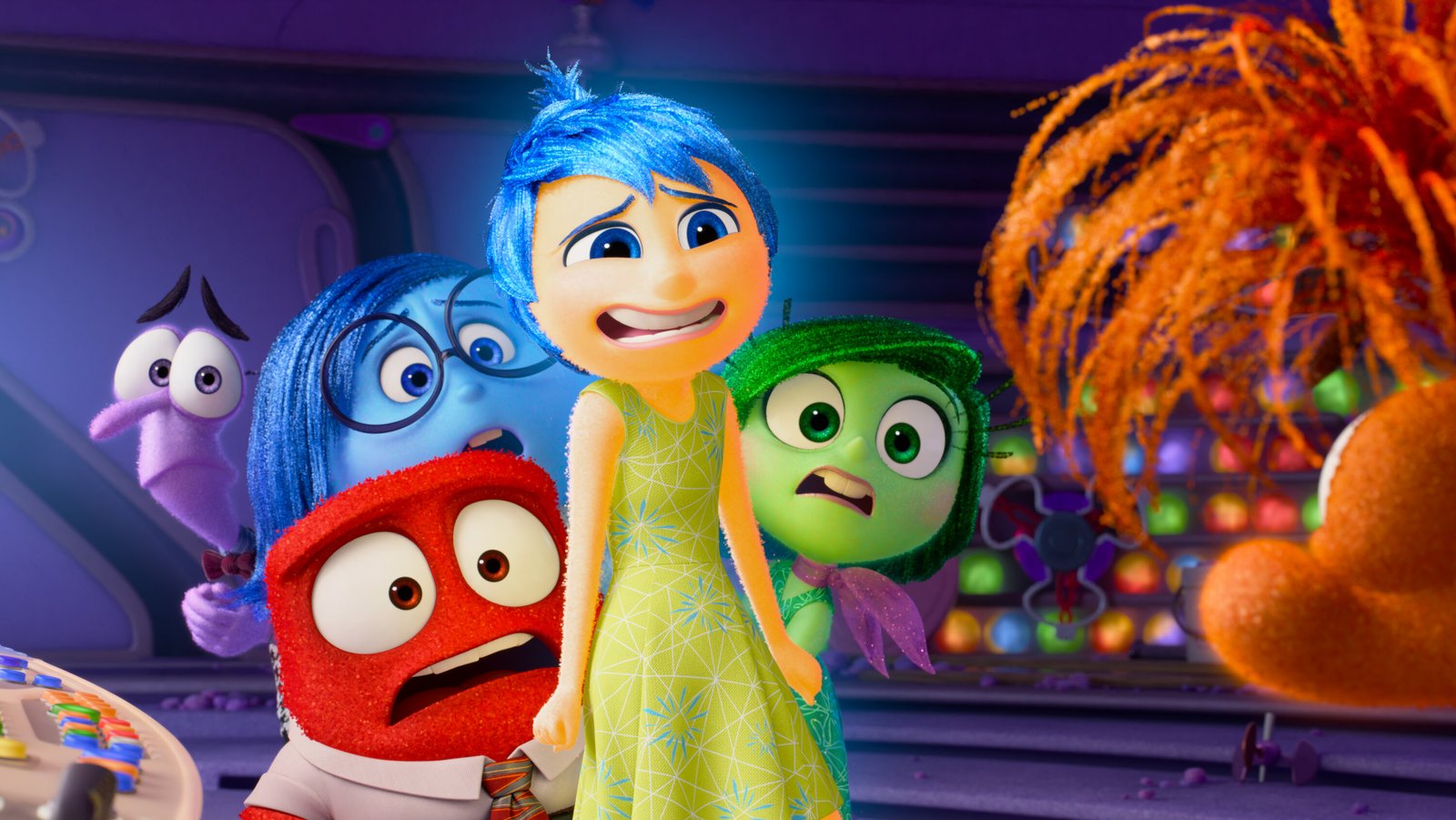
When it was released in 2015, Pete Docter’s “Inside Out” was a seminal moment for Pixar. Coming on the heels of a pair of films that didn’t connect with audiences or critics in the same way that much of the studio’s earlier work had (2012’s “Brave” and 2013’s “Monsters University”), “Inside Out” saw Pixar out to prove they still had it. And as it turned out, they absolutely did.
After some decidedly unflattering discourse discussing the studio’s new penchant for favoring sequels and prequels over original material, “Inside Out” was an original film that hit every possible benchmark for success: it became one of the best-reviewed films Pixar had ever made, grossed just shy of a billion dollars, and won an Oscar. “Inside Out” is a truly stunning film, one that builds upon a bedrock of remarkably nuanced emotional intelligence to deliver an animated feature just as engaging philosophically as it is as a piece of entertainment.
Now, in 2024, Pixar is in a very different position. Despite the fact that the overwhelming majority of Pixar’s recent output has been incredibly well-received original films, these films have not been released in theaters. This is partially due to COVID-related lockdowns and partially due to Disney’s insistence on betting every chip possible on their streaming service, Disney+. As a result, films like “Soul,” “Luca,” and “Turning Red” (all of which are absolutely wonderful and unique works that deserve to be acknowledged as modern classics within the Pixar oeuvre) were not released in theaters and in their place, the aggressively lackluster films “Lightyear” and “Elemental” were. Thus, Pixar has been pushed back into a very similar corner, one in which their artistic and commercial viability has been questioned from every side, including parent-company Disney most of all.
So Kelsey Mann’s “Inside Out 2” finds itself being released to a scrutinizing media environment, trying to hit every possible quadrant for success once more, just like its predecessor. But does “Inside Out 2” have what it takes to live up to the critical, commercial, and cultural juggernaut that was the first film?
5. Weak Spot: Commodity Over Character
One of the first things to strike this writer as strange in the lead-up to “Inside Out 2” was the lack of returning creatives, both in front of and behind the digital camera. While Amy Poehler is back, as are several others, there are numerous highly notable absences that one does not typically see in Pixar sequels. Neither Bill Hader nor Mindy Kaling have returned to their roles of Fear or Disgust, respectively, and even composer Michael Giacchino, whose score for the first film has become so indelibly ingrained in the minds and memories of audiences, is woefully missing here.
This is all strange, given the lengths Pixar has gone to actively preserve these kinds of creative teams in the past. All four Toy Story films have kept the core voice cast involved as much as possible, and you don’t see Randy Newman not returning to score one of those sequels. In and of itself, this observation is not a problem, but it’s indicative of a larger systemic issue. “Inside Out” was a film about characters, and “Inside Out 2” flattens those characters into commodities in practically every way.
Part of this has to do with the sheer number of characters in “Inside Out 2.” By introducing four new Emotions to the cast, “Inside Out 2” is a far more crowded film, one that feels ultimately unable to devote worthwhile time to properly defining or developing its characters.
As an easy example, in “Inside Out,” Bill Hader as Fear felt like a real character. We spent meaningful time with him, both with the rest of the Emotions and in solidarity, and came to understand his role within Riley’s emotional state on many levels. In “Inside Out 2,” Fear is a caricature of Hader’s original performance. New voice actor Tony Hale does a great job, but the character himself is defined by the broadest strokes imaginable here, and it’s to the overall detriment of the character and the film. In juggling so many more characters and moving pieces, “Inside Out 2” loses the stark clarity, focus, and impact of the first film and muddies the central metaphor at the series’ core.
4. Maya Hawke as Anxiety
The one new emotion who truly shines in “Inside Out 2” is Anxiety, voiced delightfully by Maya Hawke.
Without delving too deeply into specifics to preserve some of the film’s later surprises, Anxiety’s role in the story stands out as a highlight where the emotional intelligence of “Inside Out 2” matches that of the first film. The portrayal of Anxiety manages to convey with genuine subtlety and nuance the ways in which anxiety can impact someone, especially during adolescence.
Maya Hawke’s vocal performance is exceptional, effectively capturing the complexities of Anxiety’s motivations. Supported by the strong writing of the character in Meg LeFauve & Dave Holstein’s script and stunning animation, Anxiety emerges as one of the most skillfully crafted and impactful elements of “Inside Out 2.”
3. Weak Spot: Maintaining the Status Quo
There are several instances throughout the runtime of “Inside Out 2” where it feels like the filmmakers are yearning to break free from the confines of delivering ‘another Inside Out’ and instead offer something beyond that preconceived notion. Throughout the film, concepts such as Riley driving herself without the influence of any Emotions, delving into the emotions that constitute the Emotions themselves, and exploring how one’s primary emotions evolve over time are all hinted at. However, disappointingly, none of these ideas are explored with any real depth.
Instead, “Inside Out 2” appears determined to cling to the status quo established by its predecessor, often to its own detriment. While these ideas suggest potential avenues for a transformative story involving Riley and her emotions, the film fails to fully realize any of them. Instead, the overarching theme of the film feels like a slight variation on the deeper theme of the first film. Similarly, the narrative of “Inside Out 2” feels deliberately reminiscent of its predecessor, lacking the imagination in staging, settings, or character development that made the original so memorable.
2. Weak Spot: A Lack of Imagination
The first “Inside Out” feels bursting with creativity, imagination, and monumental stakes. While the external story is simply about Riley and her family moving to a new city and her contemplating running away from home, the narrative feels almost mythic due to the meticulous interweaving of a propulsive narrative and profound themes by Docter and his team.
In contrast, “Inside Out 2” often feels oddly insular and small-scale in the wrong ways. While using a weekend away at hockey camp as the narrative’s core is not a bad idea, as it serves as a microcosm of Riley’s impending adolescence, the film fails to emotionally convey the magnitude of this event as effectively as it does intellectually.
This is exacerbated by an in-brain adventure for the Emotions that feels more like a straightforward task than the grand odyssey of the first film. While the first film also revolved around retrieving a MacGuffin, it did so to facilitate character growth and thematic exploration. In “Inside Out 2,” this narrative structure remains, but the essential components feel far more scarce and less impactful.
1. The Vault
The true standout scene of “Inside Out 2” revolves around a vault within Riley’s head dedicated to safeguarding her secrets. Within this vault lies a plethora of hilariously clever gags, including a recurring one that parents of very young children will undoubtedly find immensely enjoyable. What sets this sequence apart is its utilization of a mixed-media style of animation, which deviates from Pixar’s typical aesthetic in unexpected ways, enhancing the scene’s impact. There’s a genuine exuberance and innovative energy to this moment, which the film could have benefited from incorporating more extensively.
(B-)
“Inside Out 2” is a very well-made film. It’s funny, charming, and compelling, but it doesn’t quite reach the same level of humor, charm, and emotional resonance as the first “Inside Out” film. While it represents an improvement over Pixar’s previous theatrical releases, “Lightyear” and “Elemental,” it falls short of the artistic fulfillment and singular vision found in recent works like “Soul” by Pete Docter and Kemp Powers, “Luca” by Enrico Casarosa, and “Turning Red” by Domee Shi.
Although “Inside Out 2” isn’t a disaster, it feels like a movie that prioritizes mass appeal and accessibility over passionate storytelling and creative vision at every turn.
Entertainment
Traffic alert: Biden, Obama will appear at downtown L.A. fundraiser Saturday evening
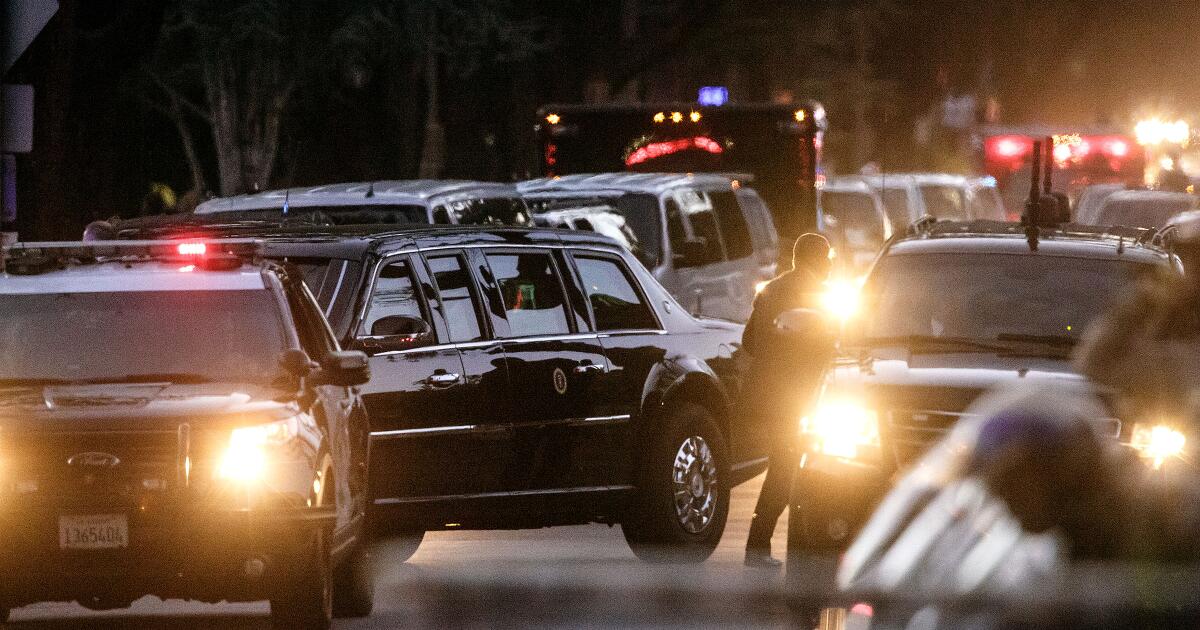
President Biden arrived in Los Angeles early Saturday for a star-studded fundraiser expected to break records by bringing in more than $28 million from thousands of supporters. But many more Angelenos are likely to be affected by the presidential visit — because of traffic.
The gathering — featuring former President Obama, actors George Clooney and Julia Roberts and other celebrities — is scheduled to take place Saturday evening at the Peacock Theater in downtown Los Angeles. At least one protest is planned outside.
Roads and street parking in the area, including the L.A. Live entertainment complex that is home to the theater, will be blocked at times, and heavy traffic is expected. Additionally, it’s unclear where Biden, First Lady Jill Biden and Obama will be staying during their time in Los Angeles, but freeway closures should be expected when their motorcades carom around town.
Los Angeles transportation and police officials referred questions about road closures to the U.S. Secret Service, which declined to provide details but warned of potential congestion.
“The U.S. Secret Service works closely with our local law enforcement partners to minimize disruptions to the public while ensuring the highest level of safety and security,” said Melissa McKenzie, a spokesperson for the Secret Service. “For security reasons, we are unable to release specific motorcade routes in advance, but the public can expect intermittent road closures and parking restrictions as part of the visit.”
A spokesperson for the Los Angeles Department of Transportation was more blunt.
“Travelers should anticipate delays in the downtown area and plan accordingly,” said spokesperson Colin M. Sweeney.
The Federal Aviation Administration has restricted airspace for “VIP Movement” over a swath of the region from 4:45 a.m. Saturday to 3 p.m. Sunday for pilots who are not flying presidential, passenger, cargo, military, law enforcement or air-ambulance aircraft.
Traffic jams prompted by presidential visits are not surprising given the enormous security resources needed to protect the leader of the free world, particularly when he is not in a secure site such as the White House or an event space that has been thoroughly prescreened.
But in Los Angeles, the ensuing traffic jams are also legendary. They were so bad during Obama’s tenure that the phrases “Obamajam” and “Obamageddon” became part of the local vernacular.
“Mr. President, I elected you to be in the White House, not on the 405,” one commentator wrote on Twitter during a 2012 Obama visit to Los Angeles for a fundraiser at George Clooney’s Studio City house. “There are times other than rush hour during which you can visit L.A.”
Obama’s handlers clearly learned from such experiences, increasingly using helicopters to ferry the president around the city to reduce road and highway closures.
Biden has also created traffic jams when he has visited the region, such as when parts of the 405 Freeway were shut down during a weeknight rush hour so the president could travel from Century City to media mogul Haim Saban’s sprawling Beverly Park estate for a fundraiser in February.
-

 Movie Reviews1 week ago
Movie Reviews1 week agoStream It Or Skip It: ‘Under Paris’ on Netflix, a shark-in-the-Seine thriller that delivers the ludicrousness you crave
-

 News1 week ago
News1 week agoWoman handcuffed in police car hit by freight train reaches $8.5M settlement
-

 News1 week ago
News1 week agoIsrael used a U.S.-made bomb in a deadly U.N. school strike in Gaza
-

 World1 week ago
World1 week agoEconomy, migration: Voters' main concerns ahead of elections
-

 Politics1 week ago
Politics1 week agoTrump campaign accelerates vetting of potential running mates
-

 Movie Reviews1 week ago
Movie Reviews1 week agoShort Film Review: Blue and White (2022) by Hiroyuki Nishiyama
-

 World1 week ago
World1 week agoWorld leaders, veterans mark D-Day’s 80th anniversary in France
-

 World1 week ago
World1 week agoFrance to provide Ukraine with its Mirage combat aircraft
